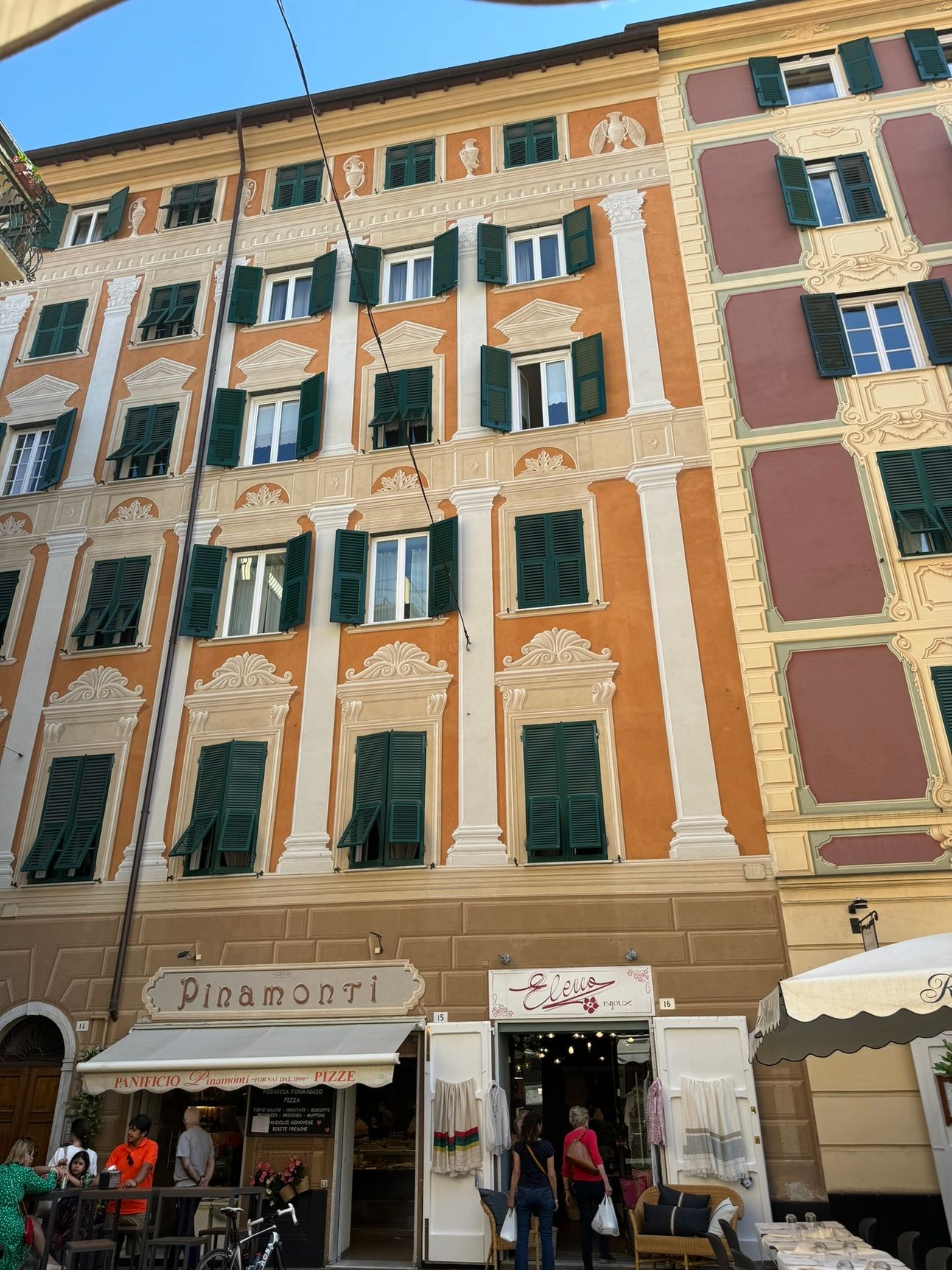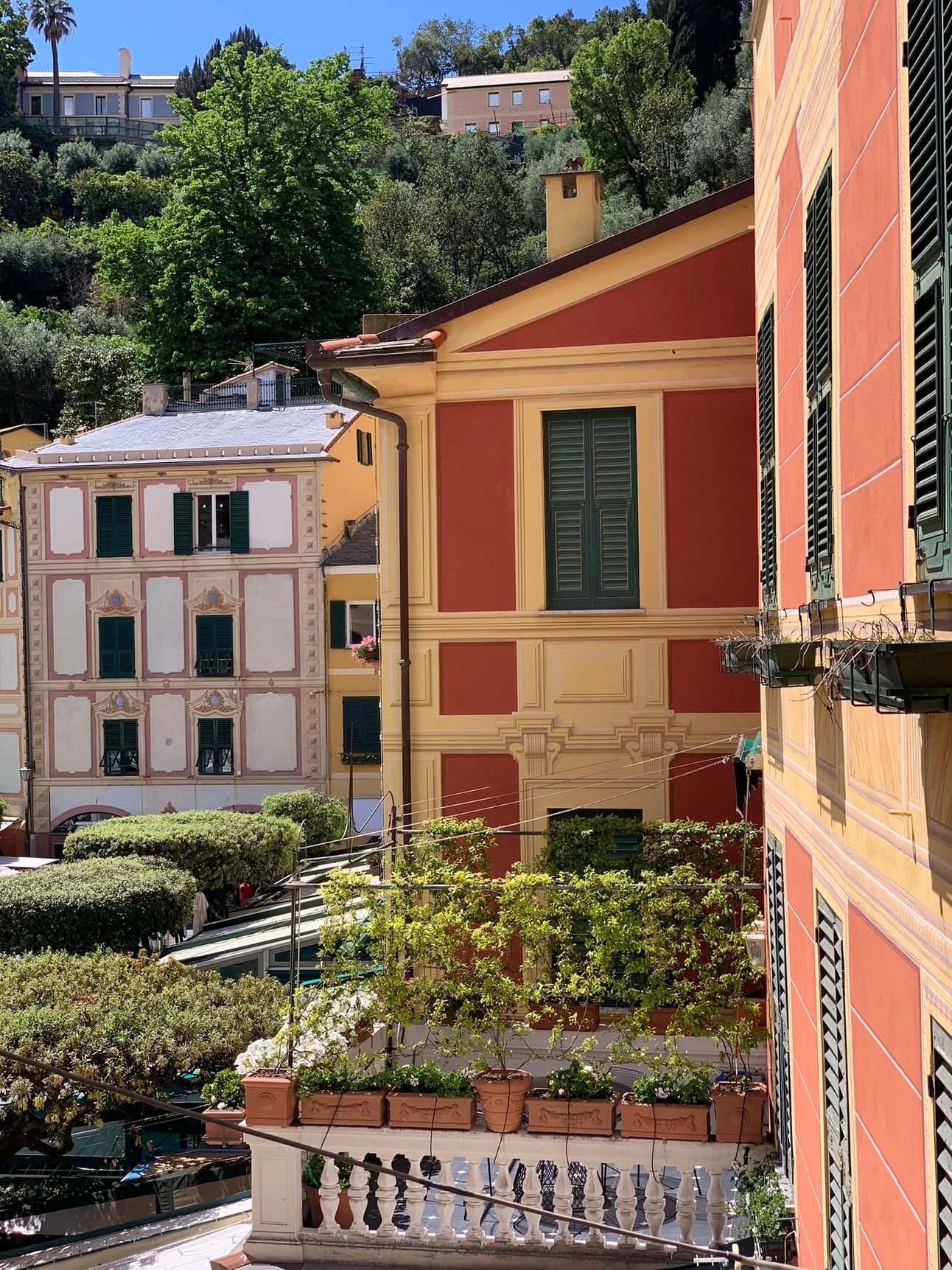
Riomaggiore, one of the five villages of the Cinque Terre
Like haphazardly stacked lego blocks tumbling down steep hillsides, the gelato coloured houses are a big part of the charm of the seaside villages in the region of Liguria. Look closely and it becomes apparent that not all is as it seems. Windows are not windows and doors are not doors. They are simply painted on for effect, but with great skill to create an illusion that they are real.
The five villages of the Cinque Terre, Santa Margherita, Portofino and Camogli all have this decorative style that is called trompe-l’oeil. And no, it is not for the benefit of tourists.

Santa Margherita, a beautiful seaside resort town five kilometres from Portofino.
This unique tradition has been around for centuries. Since the Renaissance, painted optical illusions have been popular, especially in northern Italy. For practical reasons, the clever Ligurians decided to create the illusion of beauty and wealth on the outside of the house instead of the inside. They avoided having to commission and pay for elaborate marble columns and window carvings. There were also high window taxes, so why not paint fake windows rather than construct them.
Masters working at a specialised school of art began teaching students how to paint garlands, balustrades, windowsills and 3D illusions that looked impressively real through the art of perspective.

Picture perfect Portofino demonstrates this brilliantly
Some of the decoration is simply detailing such as the painted garlands along rooflines or colourful ribbons over doorways, but other work has more symbolic meaning.
Portofino, a playground for the rich and famous that has graced every front cover of every travel magazine is tiny with less than 400 residents. The history and tradition of their painted houses has great significance and importance.
Here’s the interesting thing. The old way was to create decorative house facades as a fresco. This meant painting onto wet plaster so the colour dried into the walls. The natural local pigments gave the ochre and terracotta colours. The process relied on working quickly once the walls had been plastered to get the layers of pigments on, sometimes working all night by candelight before it dried. This traditional method of decorating allowed the intricate work to last for 30, 40, even 50 years against the elements of stormy weather, salt and sea.
In the 1990s, synthetic paint replaced the old way. The colours might be brighter and deeper, but they only last a few years before they peel and have to be re-done. This is the reason we see so many buildings with peeling paint.
The good news is that the region of Liguria is seeing a return of the tried and tested traditional method of decorating, with apprenticeships available at the University of Genoa to learn the skills.
Once upon a time, all of these coastal towns were small fishing villages. Many of them still are. There was another practical reason for the painted houses. From out at sea, it was easier to distinguish your village and your house, making it easier when returning late at night to enter your house, not your neighbours.
Today, it is an obligation and responsibility of the residents of the painted houses to upkeep the paint and decorations with the same colours and patterns. A lot of the painting is protected by local authorities and cannot be changed or removed.
I know I have a deeper understanding and appreciation of why a window is not a window and a door is not a door!
Ci vediamo la prossima settimana.
Deb
